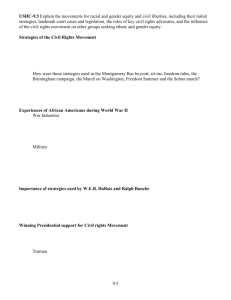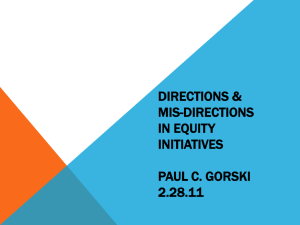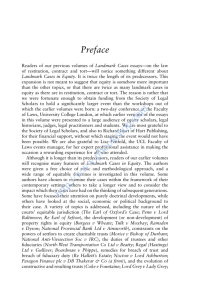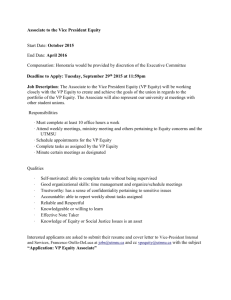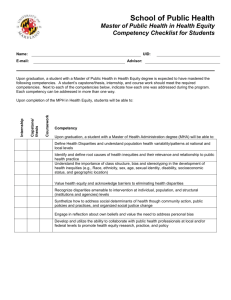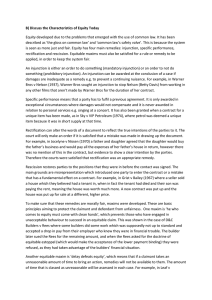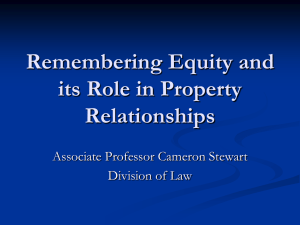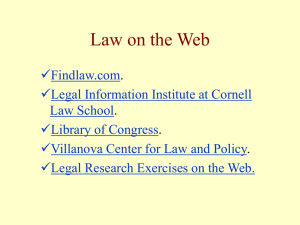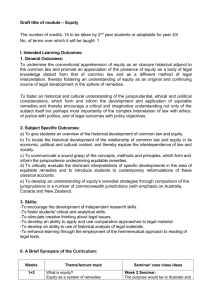2.6 Valerie - 7th - PreAlg - Induction Standard Self Assessment
advertisement
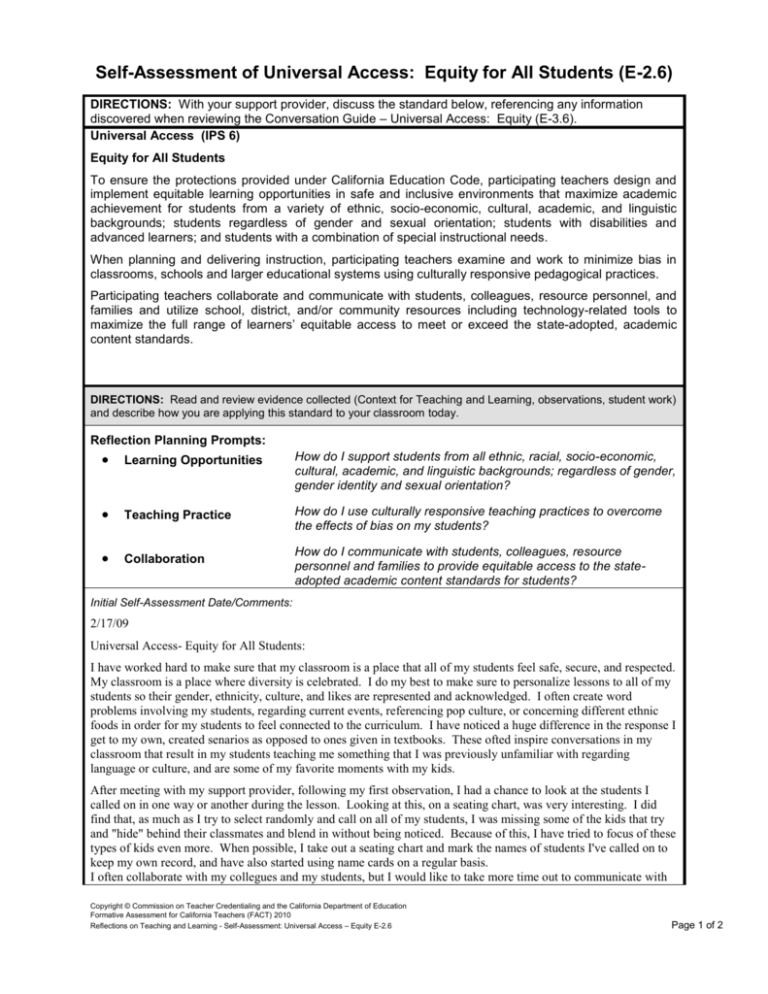
Self-Assessment of Universal Access: Equity for All Students (E-2.6) DIRECTIONS: With your support provider, discuss the standard below, referencing any information discovered when reviewing the Conversation Guide – Universal Access: Equity (E-3.6). Universal Access (IPS 6) Equity for All Students To ensure the protections provided under California Education Code, participating teachers design and implement equitable learning opportunities in safe and inclusive environments that maximize academic achievement for students from a variety of ethnic, socio-economic, cultural, academic, and linguistic backgrounds; students regardless of gender and sexual orientation; students with disabilities and advanced learners; and students with a combination of special instructional needs. When planning and delivering instruction, participating teachers examine and work to minimize bias in classrooms, schools and larger educational systems using culturally responsive pedagogical practices. Participating teachers collaborate and communicate with students, colleagues, resource personnel, and families and utilize school, district, and/or community resources including technology-related tools to maximize the full range of learners’ equitable access to meet or exceed the state-adopted, academic content standards. DIRECTIONS: Read and review evidence collected (Context for Teaching and Learning, observations, student work) and describe how you are applying this standard to your classroom today. Reflection Planning Prompts: Learning Opportunities How do I support students from all ethnic, racial, socio-economic, cultural, academic, and linguistic backgrounds; regardless of gender, gender identity and sexual orientation? Teaching Practice How do I use culturally responsive teaching practices to overcome the effects of bias on my students? Collaboration How do I communicate with students, colleagues, resource personnel and families to provide equitable access to the stateadopted academic content standards for students? Initial Self-Assessment Date/Comments: 2/17/09 Universal Access- Equity for All Students: I have worked hard to make sure that my classroom is a place that all of my students feel safe, secure, and respected. My classroom is a place where diversity is celebrated. I do my best to make sure to personalize lessons to all of my students so their gender, ethnicity, culture, and likes are represented and acknowledged. I often create word problems involving my students, regarding current events, referencing pop culture, or concerning different ethnic foods in order for my students to feel connected to the curriculum. I have noticed a huge difference in the response I get to my own, created senarios as opposed to ones given in textbooks. These ofted inspire conversations in my classroom that result in my students teaching me something that I was previously unfamiliar with regarding language or culture, and are some of my favorite moments with my kids. After meeting with my support provider, following my first observation, I had a chance to look at the students I called on in one way or another during the lesson. Looking at this, on a seating chart, was very interesting. I did find that, as much as I try to select randomly and call on all of my students, I was missing some of the kids that try and "hide" behind their classmates and blend in without being noticed. Because of this, I have tried to focus of these types of kids even more. When possible, I take out a seating chart and mark the names of students I've called on to keep my own record, and have also started using name cards on a regular basis. I often collaborate with my collegues and my students, but I would like to take more time out to communicate with Copyright © Commission on Teacher Credentialing and the California Department of Education Formative Assessment for California Teachers (FACT) 2010 Reflections on Teaching and Learning - Self-Assessment: Universal Access – Equity E-2.6 Page 1 of 2 families over the phone. I have used technology related tools like Teleparent and Snapgrades to send messages, however, I would like to make more phone calls home to give families feedback and let them know how their students are doing. Revisit Date(s)/Comments: 4/10/09 I believe that I am a stronger teacher now because I realize the importance of differentiation in my teaching and my assessment of student learning. Looking at individual student progress from the start of a unit or chapter to the end takes a little extra time and energy, but provides instrumental feedback that helps me to better meet the needs of all of my students. Earlier in the year, I think I neglected my GATE and higher level students. I did not provide enough of a challenge to keep them stimulated or engaged, Although they did not complain or perform poorly because they are good students, I do think they probably left my class on more than one occasiion without learning anything new. I now know that this is not okay, and I will not let it happen again. I provide challenge assignments regularly, and differentiate assessments so that all of my students have the opportunity to choose what they want to do at the level that they are stimulated. Final Self Assessment Date/Comments: Copyright © Commission on Teacher Credentialing and the California Department of Education Formative Assessment for California Teachers (FACT) 2010 Reflections on Teaching and Learning - Self-Assessment: Universal Access – Equity E-2.6 Page 2 of 2
